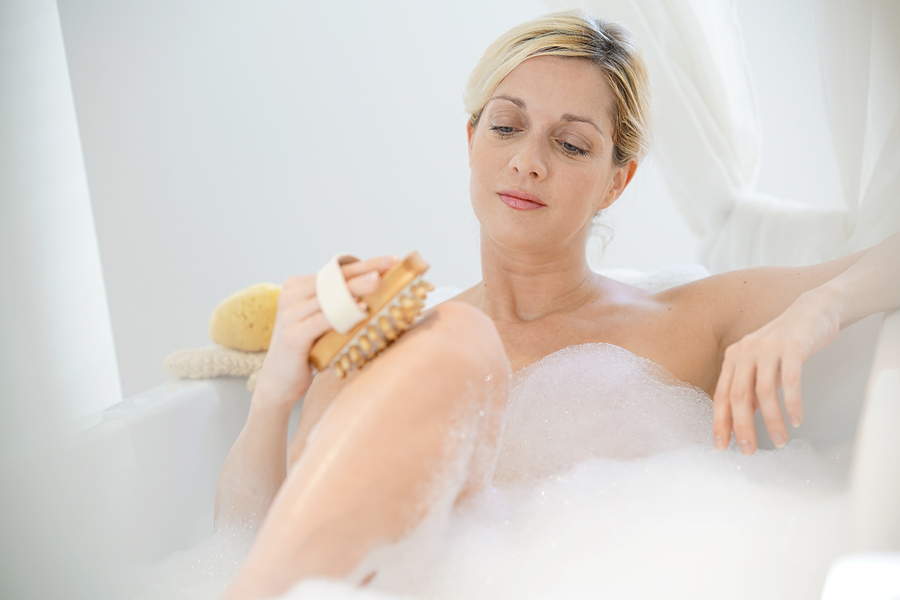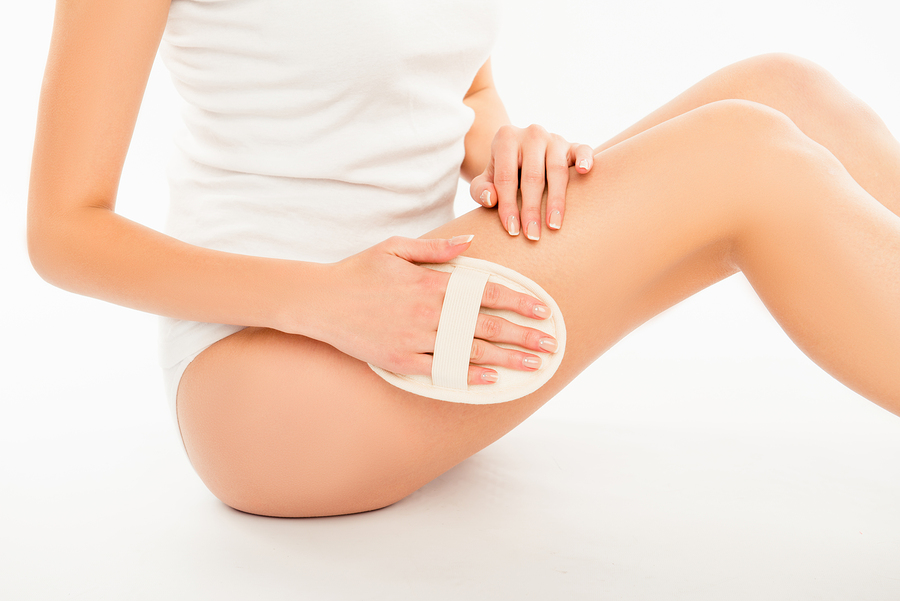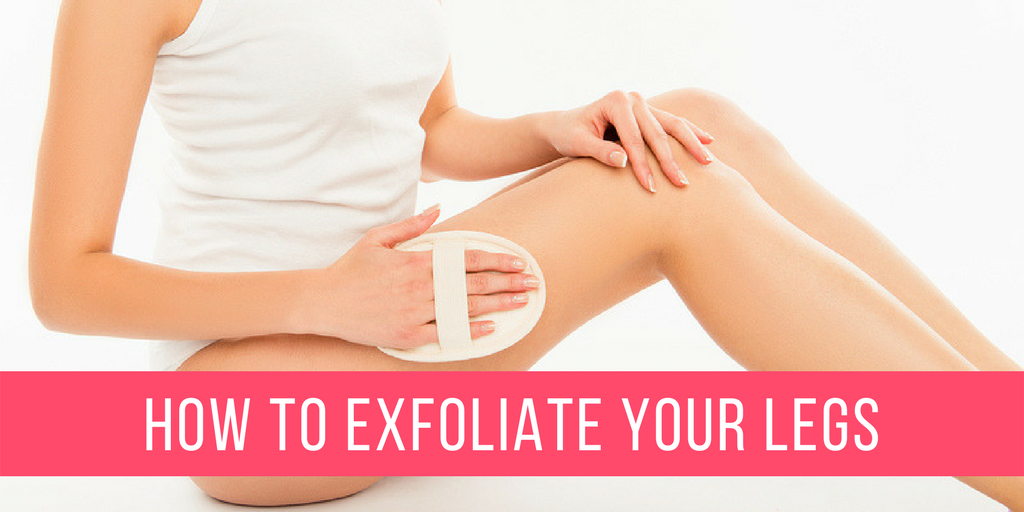Something that should be part of everyone’s hair removal routine that doesn’t get a lot of attention is exfoliation! For many people, using a loofah or chemical exfoliant can totally change their hair removal routine for the better. Keep reading to find out why!
What is exfoliation?
Your skin is constantly renewing itself and “shedding” tiny skin cells every day. Sometimes this shedding is pretty obvious–anyone who’s had to wear a plaster cast or splint for a few weeks can testify to that! But even when you can’t see or feel little flakes, they’re still there. Getting rid of dead skin cells on the surface of your skin is the process of exfoliation.
There are two main types of exfoliation: physical and chemical. Physical exfoliation involves scrubbing your skin with a wash cloth or special exfoliating tool. Chemical exfoliation involves applying liquids or gels to your skin without manually scrubbing. Chemical exfoliants can do a few different things, but in general they penetrate more deeply into the skin than manual, surface-level exfoliation to encourage your skin to shed dead skin cells and stimulate new growth.
Why should I exfoliate?
First of all, there are some awesome cosmetic benefits to exfoliation! It can make your skin look brighter and help treat or prevent acne, closed comedomes, blackheads, and dark sebaceous filaments. Physical exofliation is “rougher” and may not work for all parts of your body, especially sensitive areas like the face and bikini area. Some people also use a combination of chemical and physical exfoliation to get a wide range of benefits.
What does this have to do with hair removal? Well, exfoliating is one of the best ways to prevent ingrown hairs. Exfoliating between hair removal sessions helps keep your skin smooth, so you have less irritation while your shaving, waxing, and so on. It also helps prevent the regrowing hairs from getting trapped under your skin and forming an unsightly red bump. Plus, chemical exfoliation with products that contain BHAs like salicylic acid helps clean your pores to prevent acne and infections.

How to exfoliate your legs
Now that we’ve piqued your interest with the benefits of exfoliating, let’s learn how to exfoliate your legs. First, let’s talk about physical exfoliation.
Common tools for physical exfoliation:
Loofah
Made from synthetic fiber or a dried tropical gourd, a natural loofah needs to be dried, cleaned, and replaced regularly to prevent bacteria growth.
Body brush
Body brushes come in all shapes and sizes with clusters of bristles on the head to lift away dead skin.
Exfoliation gloves
Usually made from nylon or other synthetic materials, these gloves make exfoliating easy–just pop them on and scrubs
Body scrubs
Body scrubs usually contain small pieces of materials like nut shells or salt. Rubbing them into your skin helps to exfoliate while also moisturizing your skin.

Use just one or a combination of the above to exfoliate your legs. The skin on your legs is pretty tough compared to your face, so it can take a good amount of physical exfoliation.
Just a little scrubbing between shaves can help prevent redness and ingrown hairs!
If you’re struggling with “strawberry legs” or serious ingrown hairs, a chemical exfoliant can do wonders. There are two types of chemical exfoliant.
- AHA exfoliants: Formulas with lactic acid, glycolic acid, and other chemicals help to loosen the bonds holding dead skin cells to your skin. They can also help to fade scarring.
- BHA exfoliants: An exfoliant with salicylic acid is a BHA. This type of exfoliant penetrates through oil into your pores to help clear up clogs and prevent new ones. It also works on the surface of the skin similarly to AHAs.
Either can work for keeping your legs smooth and clear, but a BHA can be a better choice for handling persistent irritation and ingrowns.
Aftercare
Moisturize, moisturize, moisturize! That’s the secret to consistent results from exfoliation. Learning how to exfoliate your legs wouldn’t be complete without it! Moisturizers help make your skin smooth and soft, which helps reduce issues during and after hair removal.
Dead skin cells can act as a barrier to help seal moisture into your skin. Once you’ve gotten rid of them, you may see dryness or flakiness if you don’t cover up with a moisturizing lotion!
Say good-bye to ingrowns and itches!
Exfoliating can improve a lot of skin issues after hair removal and works well in many people’s skin care routines. Next time you’re in the shower on a between-shaves day, scrub your legs with a body scrub or loofah before you get out. The results may impress you!

